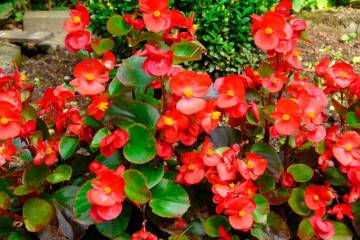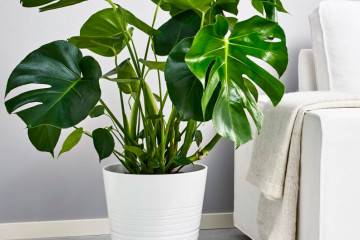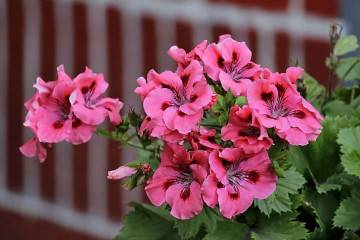Why do fuchsia leaves curl inward - what to do
Content:
- Fuchsia is sick, although the care is good
- Causes of leaf fall
- How to identify the problem by its external signs
- Diseases and pests
- Insufficient watering
- Plant lighting requirements
- Damage to the root system
- Excessive dry air
- Fertilizer overdose reaction
- Care rules during the flowering period
- Plant watering requirements
- Ambient temperature requirements
- Signs of the Gulf
- How to save fuchsia after the bay?
Fuchsia (lat. Fuchsia) is unique in that it has the property of self-regulation of water exchange and assimilation of carbon dioxide. Every florist who dealt with her, at least once faced with negative manifestations in fuchsia. With good care, the plant suddenly began to shed its leaves, dry, the leaves curled. Some growers joke that in this way the flower protests against unsuitable conditions. To save the beauty and restore the healthy look of a plant, you need to know its features.
Fuchsia is sick, although the care is good
Inexperienced growers complain that the plant sheds its leaves and buds, dries up, the leaves are prone to curling. The reasons for the poor condition are not clear, because they water it abundantly. Then it is necessary to identify why fuchsia leaves curl inward, what to do to restore it.
Fuchsia is a moisture-loving plant, but it does not like high humidity.
Causes of leaf fall
The flower reacts to any discomfort by shedding its leaves. But there are times when the loss of leaves is considered the norm, for example, in winter. The reasons for falling leaves are:
- new place;
- too much moisture;
- overdrying;
- flowering period;
- drops in humidity.
If the plant is moved to a new location, it takes time for it to adapt to the lighting. It becomes clear why fuchsia withers in a pot. The flower reacts painfully to changing conditions, but quickly returns to normal.
Moisture deficiency also leads to loss of leaves. Drying out of the soil occurs due to the air temperature above 20 degrees. The plant does not like overheating of the soil. If the soil is dry, then it should be moistened gradually. To alleviate the condition of fuchsia, you can spray the leaves from a spray bottle.
The tips of the leaves dry out due to changes in humidity when the fuchsia is not acclimatized to a new place.
How to identify the problem by its external signs
In the case of a bay or under the influence of sunlight, fuchsia has similar external manifestations. Leaves become wilted, drooping. The bay is excluded if the flower comes to life in a cool place.
If fuchsia begins to fade, sheds leaves, buds, then, apparently, it has been rearranged to a new place and it takes time to adapt.
If a powdery bloom is observed on the reverse side of the leaves, and the buds began to fall off, then the plant was attacked by pests. Lack of flowering, slow growth are associated with a low content of nutrients in the soil.
Brown spots on the leaves - due to sunburn, wrinkling of the leaves - due to watering with cold water.
Diseases and pests
Fuchsia is resistant to disease, but high humidity leads to the appearance of small dewdrops on the leaves. The plant can be treated with a solution with Fundazol in a ratio of 11: 1.
Of the pests, aphids, spider mites, whiteflies are dangerous.Aphids can be seen from above on young stems, buds. Aphids suck the sap from the plant, the leaves curl up, become dry. The drug Decis fights well with aphids.
Insufficient watering
Poor watering negatively affects the well-being of fuchsia, the leaves become withered. Especially at high air temperatures. Looking at the top layer of soil, which dries up to dust, it is clear why fuchsia withers. The soil should be moistened with small portions of water.
Lack of nutrients
Fuchsia needs feeding all year round, except for winter. A deficiency in nutritional ingredients affects the health of the plant, the leaves turn yellow, the plant stops blooming. Fuchsia leaves fall, what should I do? - to feed. Fertilizers are added once a week, starting in March. When the fuchsia fades, take a short break, then feed again.
It is important to transplant the cuttings into soil rich in beneficial microelements.
Plant lighting requirements
Fuchsia feels good under diffused sunlight at the beginning and at the end of the day, and suffers from the heat of the day. For lush flowering at home, create a balance between intense daylight and shade from the scorching rays of the sun. Varieties with bright flowers require more light, and they happily stand in the open sun. Fuchsias with inflorescences of delicate shades like to be in lacy shade.
To place fuchsia in an apartment, windows are chosen from any side, except for the south. Otherwise, the leaves of the fuchsia will fall off.
Damage to the root system
Excessive flooding, drying out, excess fertilizer and rot will damage the fuchsia root system. The disease is not immediately noticeable, but it gradually destroys the plant. To understand that a flower needs help is easy by rolling the leaves. You can save if the cut of the trunk is still green. The plant is placed in a shaded, cool place, diseased roots are removed.
Excessive dry air
Fuchsias love to be outside, so they are often planted in open ground in the country or in the garden. Excessive dryness cannot be tolerated. Because of it, you can see how the leaves of the plant curl and turn yellow. Why does fuchsia shed its leaves and what should be done? Dryness in the air may be the cause. It is necessary to humidify the room.
Fertilizer overdose reaction
For lush color, flower growers abuse fertilizers. The opposite effect occurs. Fuchsia withers. An excess of feeding leads to a violation of the vegetation processes, nitrates are formed, and the tissues die off. Dangerous mistakes occur with an overdose of mineral fertilizers.
Care rules during the flowering period
After wintering, the plant needs help for healthy flowering. Dried leaves are trimmed, dead flowers are removed. The branches that have grown inside are taken out and removed.
During the flowering period, growth retardation, lack of flowers are often observed. This is due to poor soil, insufficient amounts of nutrients. The plant requires potassium, phosphorus, so it needs to be fed.
Fuchsia is actively developing the root system. The pot should be spacious.
Plant watering requirements
Excessive watering disrupts gas exchange in the soil, provoking its acidification. A moldy crust forms on the surface. The root system is deficient in oxygen, the roots gradually rot, and the small roots die off quickly.
Proper adherence to watering rules will help to avoid fuchsia diseases. In the spring-autumn season, fuchsia needs good watering if the topsoil dries. In winter, watered in the morning, in moderation.
In the autumn period (October-November), watering is reduced until it is completely canceled.In the cold season, 1-2 waterings per month are enough for fuchsia.
When it's summer outside, the flower is watered in the evening. Due to morning watering, the roots soar in the heat in moist soil, deteriorate.
Florists equip the pot with a drainage system to prevent soil acidification.
For irrigation, use settled, soft water. Oxalic acid is used to soften.
Ambient temperature requirements
Fuchsias react painfully to heat. In summer weather, the leaves are lethargic, flabby. A healthy flowering requires a temperature between +18 ° C and +25 ° C. It is difficult to create optimal conditions in an apartment in the summer. Therefore, the plant is placed on a loggia, a terrace, in the shade, where the burning sun's rays will not reach it and the leaves will not begin to twist.
Sometimes fuchsia is planted in open soil outside. But if the air heats up to 30 ° C, then the plant will instantly shed its leaves and begin to hurt, dry.
A ceramic or porcelain pot will help keep the roots from overheating. The plastic container for flowers heats up, the ceramic keeps it cool.
Signs of the Gulf
Improper watering kills fuchsia more often than heat and pests. During the flooding, air is displaced from the soil, the roots suffocate in the earthen slurry without oxygen. The fuchsia, suffering from the bay, can be seen sluggish and drooping leaves. A moldy crust appears on the soil surface. If you do not help in time, the plant will die.
How to save fuchsia after the bay?
Waterlogged soil causes flower weakness. The leaves look sick, they are lethargic and drooping, and may curl. Without saving measures, the condition of the flower worsens, up to death.
If you find signs of a bay at the initial stage, then the plant can be reanimated.
Experienced growers advise beginners to use a paper towel, root rot remedy, phytosporin. The procedure is as follows:
- treat the soil with an anti-rot agent;
- remove the fuchsia from the pot, wrap the roots together with a lump of earth with a paper towel in several layers;
- wrap again after an hour;
- leave the plant in the winding for 3-4 weeks;
- water when the earthen lump becomes dry;
- for watering, take a solution of phytosporin.
After all the steps, when new leaves appear, return the plant to the pot.
Thus, it is important to comply with all the care requirements for fuchsia. During flowering, it is forbidden to change the usual conditions - to rearrange, turn, block the daylight, or, conversely, expose the flower to the sun. The plant is capricious, responsive to any changes in the external environment, it can throw off the buds, or the leaves will begin to curl.





















